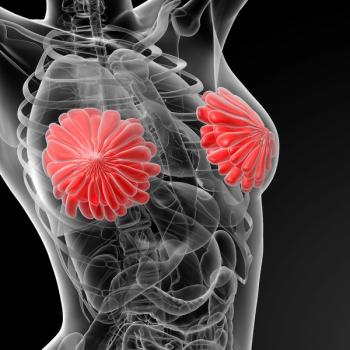
Oncology NEWS International
- Oncology NEWS International Vol 18 No 10
- Volume 18
- Issue 10
Ultrasound images bear prognostic gems for oncology
Subtle clues to the better management of cancer patients may lie hidden in images otherwise used exclusively for diagnosis. German researchers at ECCO/ESMO 2009 have found that ultrasound images of lymph nodes may contain clues to whether and to what extent melanoma has begun to spread. The discovery raises the possibility that ultrasound might help oncologists predict a patient’s probable survival without the need for sentinel node biopsy (abstract O9303).
Subtle clues to the better management of cancer patients may lie hidden in images otherwise used exclusively for diagnosis. German researchers at ECCO/ESMO 2009 have found that ultrasound images of lymph nodes may contain clues to whether and to what extent melanoma has begun to spread. The discovery raises the possibility that ultrasound might help oncologists predict a patient’s probable survival without the need for sentinel node biopsy (abstract O9303).
“For the first time we have established that ultrasound patterns can be used as criteria for diagnosing disease progression and tumor burden,” said Christiane Voit, MD, head of the diagnostic unit at the Skin Cancer Centre at Charit, Universittsmedizin Berlin.
The significance of this finding is hard to overestimate. Discovering whether cancer has spread to the lymph nodes is the most important factor influencing the prognosis and treatment of melanoma patients, according to Dr. Voit. Using ultrasound first to detect the presence of sentinel node metastases could be a noninvasive way of limiting the number of patients who require surgery. It could also serve as a watchful follow up, she said. Two ultrasound patterns allowed the group to determine the presence of tumor cells in sentinel lymph nodes. The presence of these patterns indicated cancer spread in 75% to 90% of cases. One, a balloon-shaped ultrasound pattern, indicated a large amount of cancer in the sentinel node and occurred in advanced metastasis. The second, a pattern of peripheral perfusion, where small blood vessels start to surround the lymph node, indicated that a small number of cancer cells were present in the node. The researchers found that 93% of patients with neither pattern, 87% of those with peripheral perfusion, and 56% of those with balloon-shaped ultrasound patterns survived for at least five years. The research still needs to be confirmed in multicenter, randomized clinical trials, Dr. Voit said. n
Articles in this issue
about 16 years ago
Cancer, not HPV vaccination, hastened death of UK girlabout 16 years ago
Obesity hinders treatment in pediatric leukemiaabout 16 years ago
Posaconazole reduces infection in AML patientsabout 16 years ago
Global report warns of escalating cancer rateabout 16 years ago
New class of alpha emitters takes aim at bone metastasesabout 16 years ago
Who's Newsabout 16 years ago
Stop and smell the volatile organic compounds in lung caabout 16 years ago
Proton therapy report advises cautionNewsletter
Stay up to date on recent advances in the multidisciplinary approach to cancer.















































































